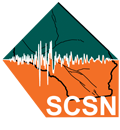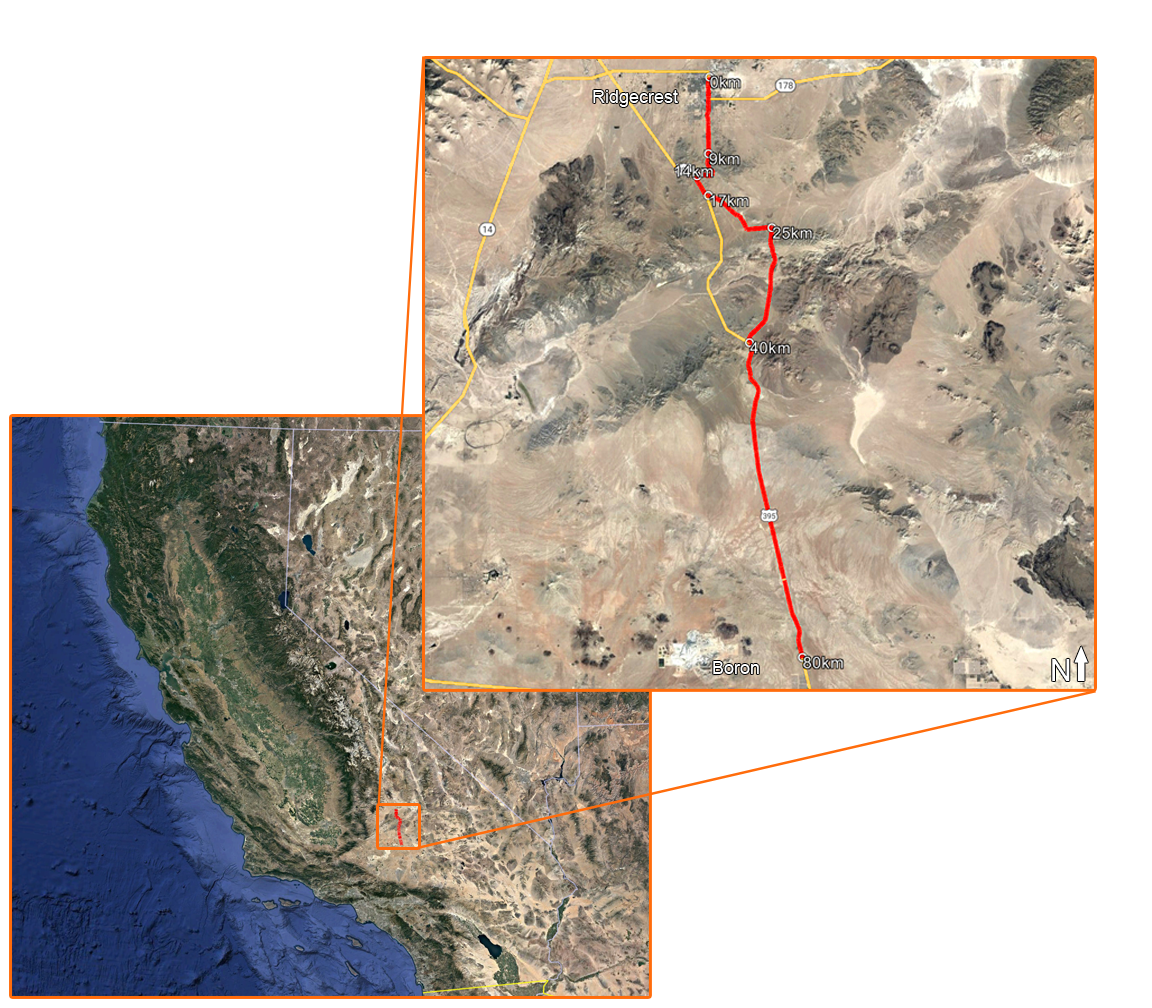Below is a real-time feed of data from a distributed acoustic sensing (DAS) array located in Southern California. DAS data is obtained by attaching instruments to existing fiber optic cables owned and installed by various telecommunication companies throughout California. The feed below displays the first 80 km of data from an OptaSense laser instrument in Ridgecrest, CA, that extends approximately 100 km, mainly along the U.S. Highway 395, with the detectable signal terminating near Boron, CA.
NOTE: Earthquake data on this site may be preliminary and subject to change.
Not recommended for viewing in Internet Explorer.
Technical Disclaimer: The length of time represented is 120 minutes with a 100 Hz sample rate. Seismic data are displayed in Pacific Standard Time (PST) during the winter and Pacific Daylight Time (PDT) during the summer. Samples are displayed as the cable is oriented, running from north to south with Ridgecrest (north) on the left of the window and Boron (south) on the right. There is a delay of approximately 20 seconds in the feed. This feed is for visual purposes only and cannot be used to locate, identify, or analyze an earthquake with any degree of accuracy. Streamed DAS array selection is subject to change. Graphical coloration is based on strain recorded at a given time and channel using a JET color bar with Blue representing low strain values, and Red representing high strain values.
The Ridgecrest DAS Array map displays the location of the 80-km-long buried fiber-optic cable (red line) attached to the OptaSense laser instrument located in Ridgecrest, CA. Map distance markers correspond to the distances indicated on the Waterfall feed header and represent where major geographic changes occur along the array. Click the map to enlarge.
Feed Examples
Below are examples of different events that are often visible on the live waterfall feed and their interpretation. Click on any of the images to view the Understanding DAS page with more example images and information.
Earthquakes
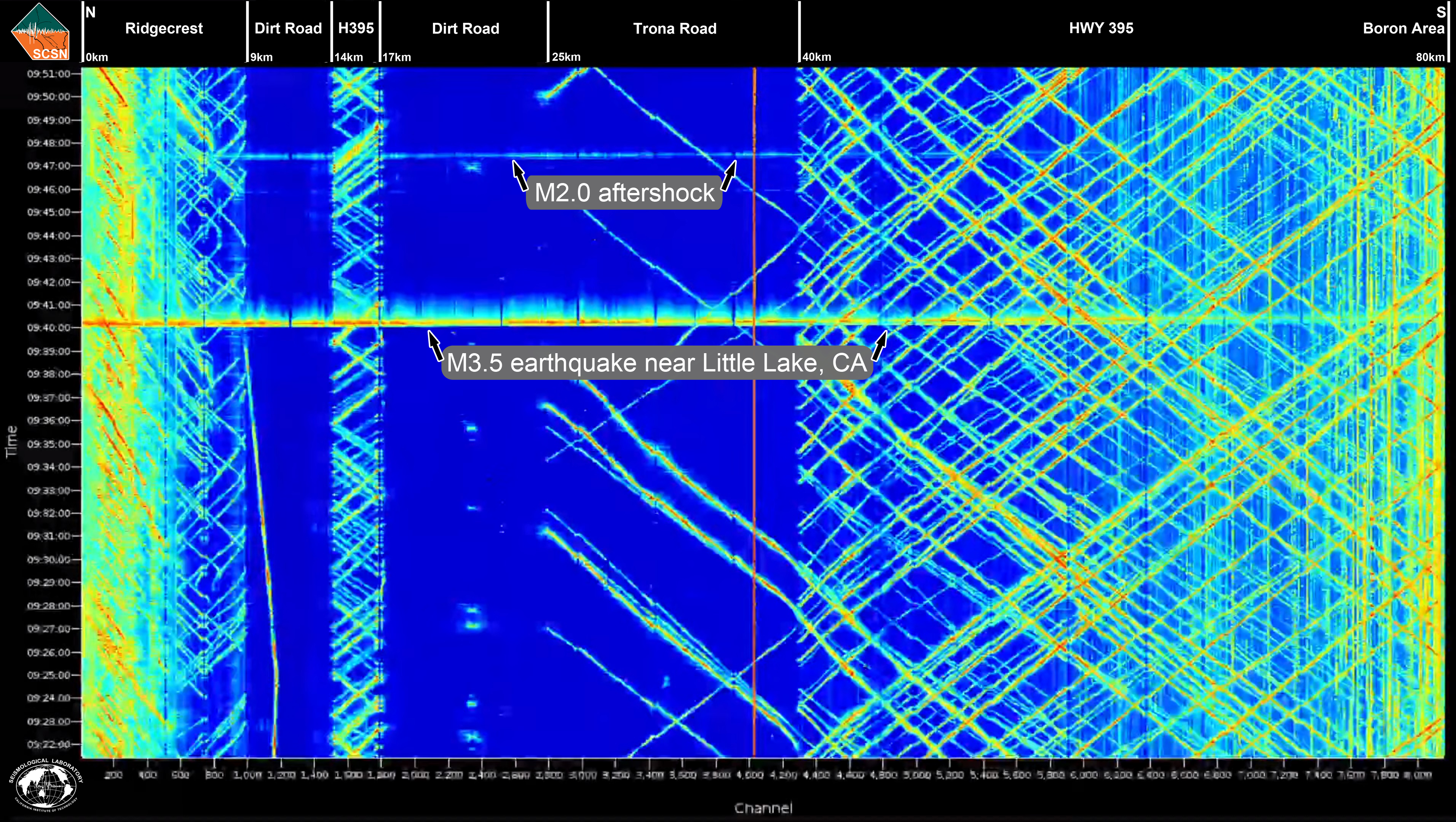
A magnitude 3.5 earthquake recorded on the Ridgecrest DAS array feed. The event located in Little Lake, CA, occurred on 2023/10/26 and shows a clear, nearly horizontal signal that is distinctly different from other types of signals that are commonly observed. A small aftershock is visible above (aka after) the M3.5 event. Because of the velocity that earthquake waves travel through the ground, earthquake signals appear as nearly horizontal lines at this 120-minute time scale.
Day/Night Cycle and Highway Traffic
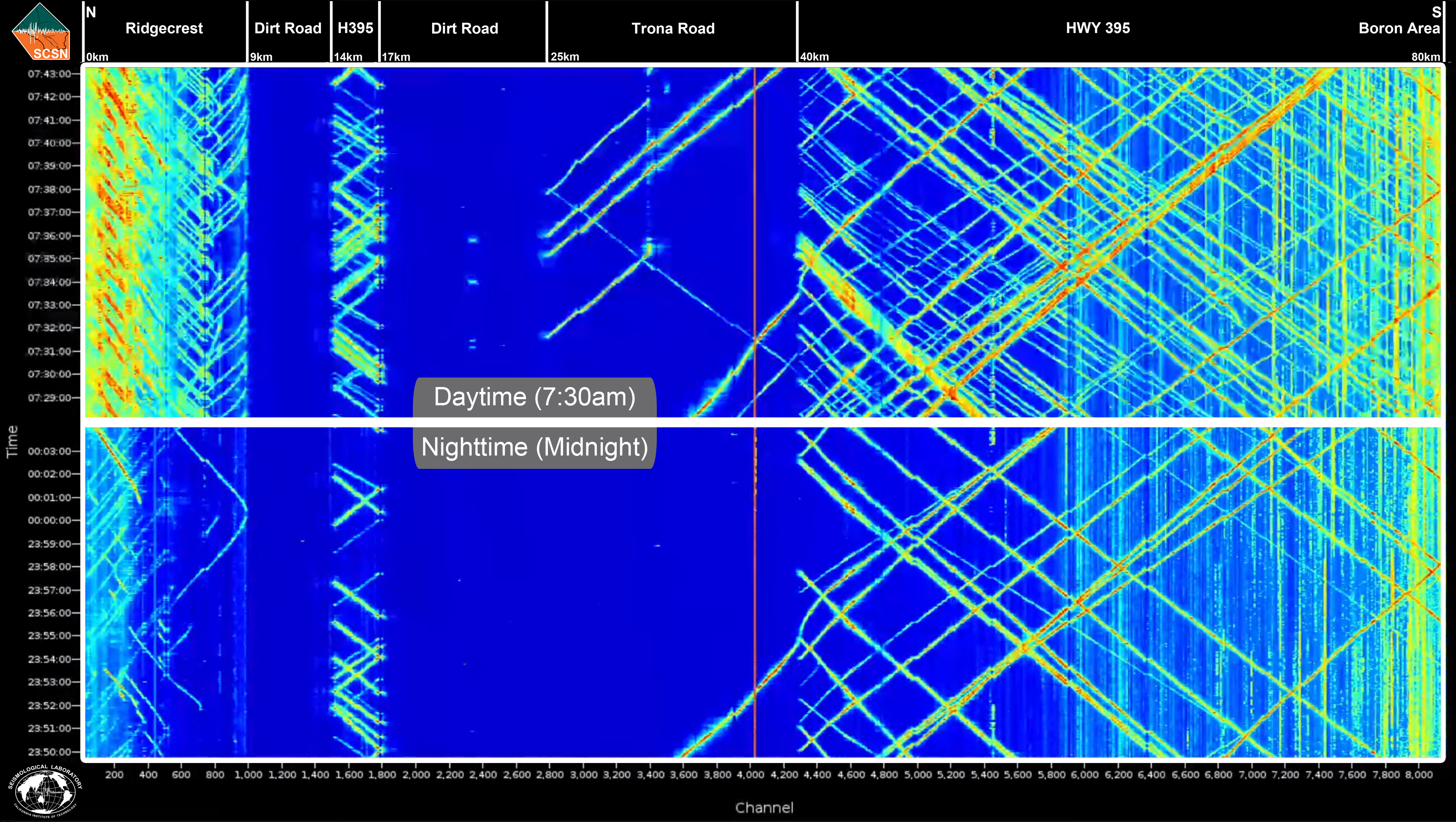
Because the array runs along Highway 395 through cities and the open desert as a major transportation corridor, the time of day heavily influences the activity visible on the DAS feed. The most prominent and constant features of the DAS stream are the 30°-50° lines. These lines, visible most commonly on the highway and near the cities, represent the shaking produced by vehicles. More vehicles are on the road during daylight hours, so there are usually more 30°-50° lines brightening up the display during the day, making the display appear drastically different than at night. Visit the Understanding DAS page to find out what else we can interpret about vehicle traffic in the DAS display!
Trains

Near channel 2200, train tracks cross the dirt road that the buried cable runs along. Unlike vehicle traffic, the train does not travel along the cable line but crosses nearly perpendicular to it. This leads to only a small number of channels recording all of the shaking generated by a heavy train crossing , which appears as a red ‘blob’ near channel 2200. You can tell by the vertical length of the signal in this image that the train took almost 15 minutes to fully cross the road!
Airplanes
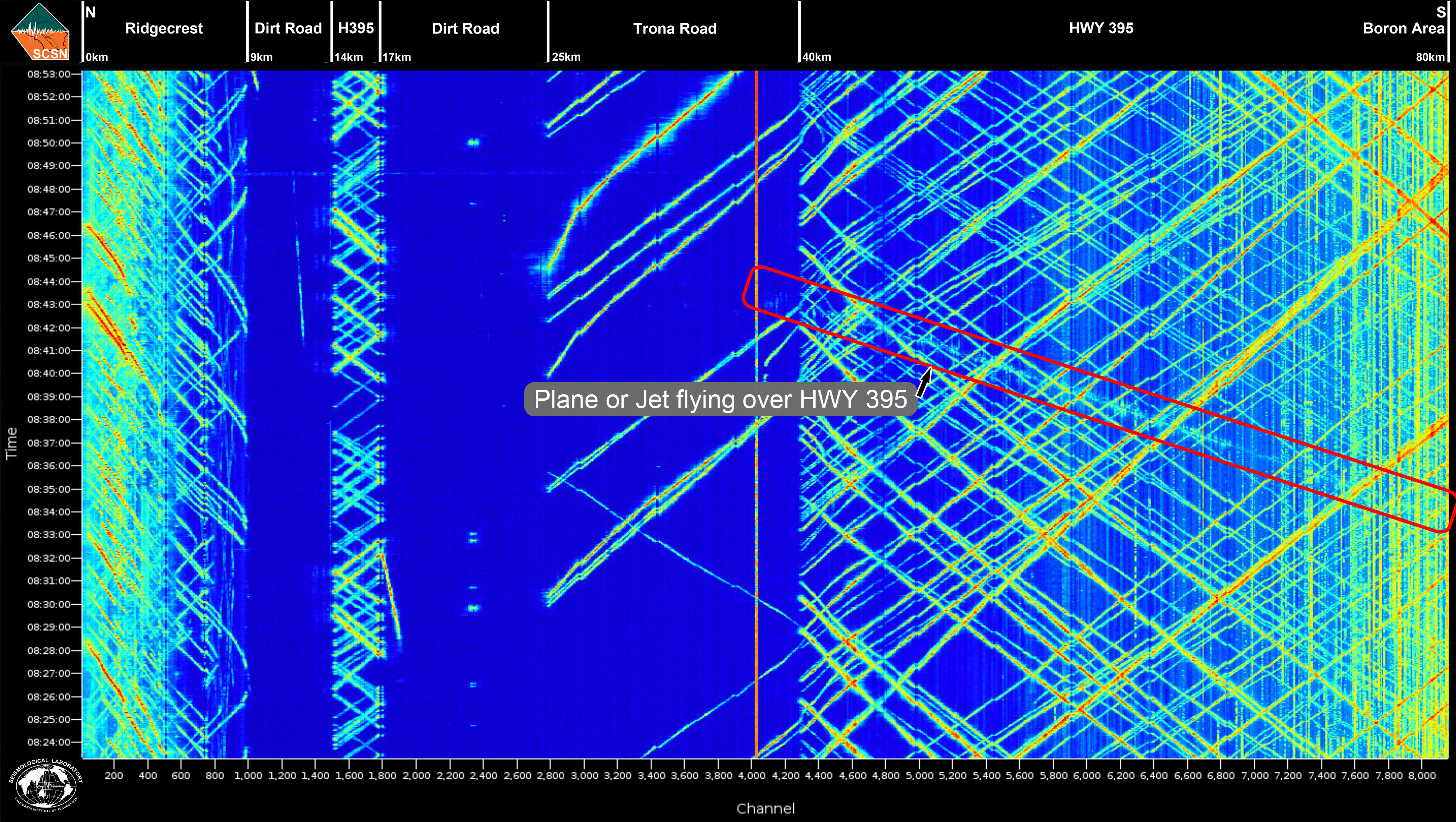
Highway 395 is commonly used as a landmark for military jets and commercial airplanes when flying over the California desert, so it’s not uncommon for there to be air traffic over the area. Though often a bit trickier to spot on the DAS stream due to higher travel speeds, airplane traffic appears as a shallower, lower angle signal (compared to ground traffic) that sometimes travels the full length of the array. Based on the line of the imaged signal, the example here likely shows a private airplane traveling north above highway 395. The signal indicates that it traveled approximately 40 km in about 10 minutes at 240 km/hr.
